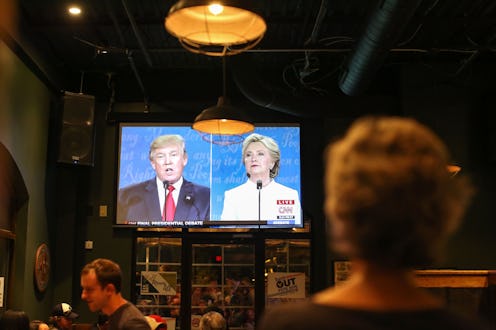News
Here's What Determines The Number Of Electors
You probably already know that in the United States, the president and vice president are elected by a group of voters known as the Electoral College, rather than the popular vote. The popular vote determines which electors get to vote, but what determines the number of electors? For the most part, it comes down to population.
When you vote on November 8, you’re actually voting for a group of electors who will in turn vote for president and vice president on the first Monday after the second Wednesday in December (yep, that’s a mouthful). Electors are usually selected by political parties in each state (so each state has a Democratic group of electors, a Republican group of electors, and so on), and in almost all cases, the electors vote in line with the popular vote, meaning that if a Republican candidate wins the state by popular vote, the electors will vote for that candidate. The same is true if a Democrat or, potentially, a third party wins the popular vote.
The number of electors each state gets is incredibly important because, in every state except Maine and Nebraska, the party that gets the popular vote for president gets the entire group of electors for the state — so if, say, one candidate wins by a single vote in Florida, that candidate gets all 29 of Florida’s votes (That’s why it’s possible for a candidate to win the popular vote and yet lose the election, as happened with Al Gore in 2000.)
So how does the government decide how many electors each state has? That depends on how many seats in Congress a state has, and that number depends on the state’s population. The U.S. Constitution says that each state is allowed a number of electors “equal to the whole Number of Senators and Representatives to which the State may be entitled in the Congress.” Every state has two senators, so every state automatically gets two electors. The distribution of the House of Representatives, in contrast, is determined by population, which leads to the variation in electoral votes for each state. California, for example, is the most populous state in the nation, and has the most members of Congress (two senators and 53 representatives) and therefore the most electoral votes (55). California’s 55 votes are followed in size by Texas’s 38, and 29 from both New York and Florida.
Every state is guaranteed at least one member in the House of Representatives, which in turn guarantees every state at least three electors (two senators and one rep). Alaska, Delaware, Montana, North Dakota, South Dakota, Vermont, Wyoming, and the District of Columbia all have three votes each.
So the question of how the government determines how many electors each states gets is really a question of how the government apportions seats in the House of Representatives, and that depends on the changing population. The U.S. Census Bureau tracks the population distribution across the nation every ten years. The number of seats in the House of Representatives is fixed at 435, but those seats can be (and are) redistributed as needed to reflect the populations of different states. After the 2010 census, for example, the South and West gained representatives and therefore Electoral College votes. Current estimates suggest that the South and West may continue to gain seats in the House, and therefore votes, after the 2020 census.
Images: Giphy (2)
